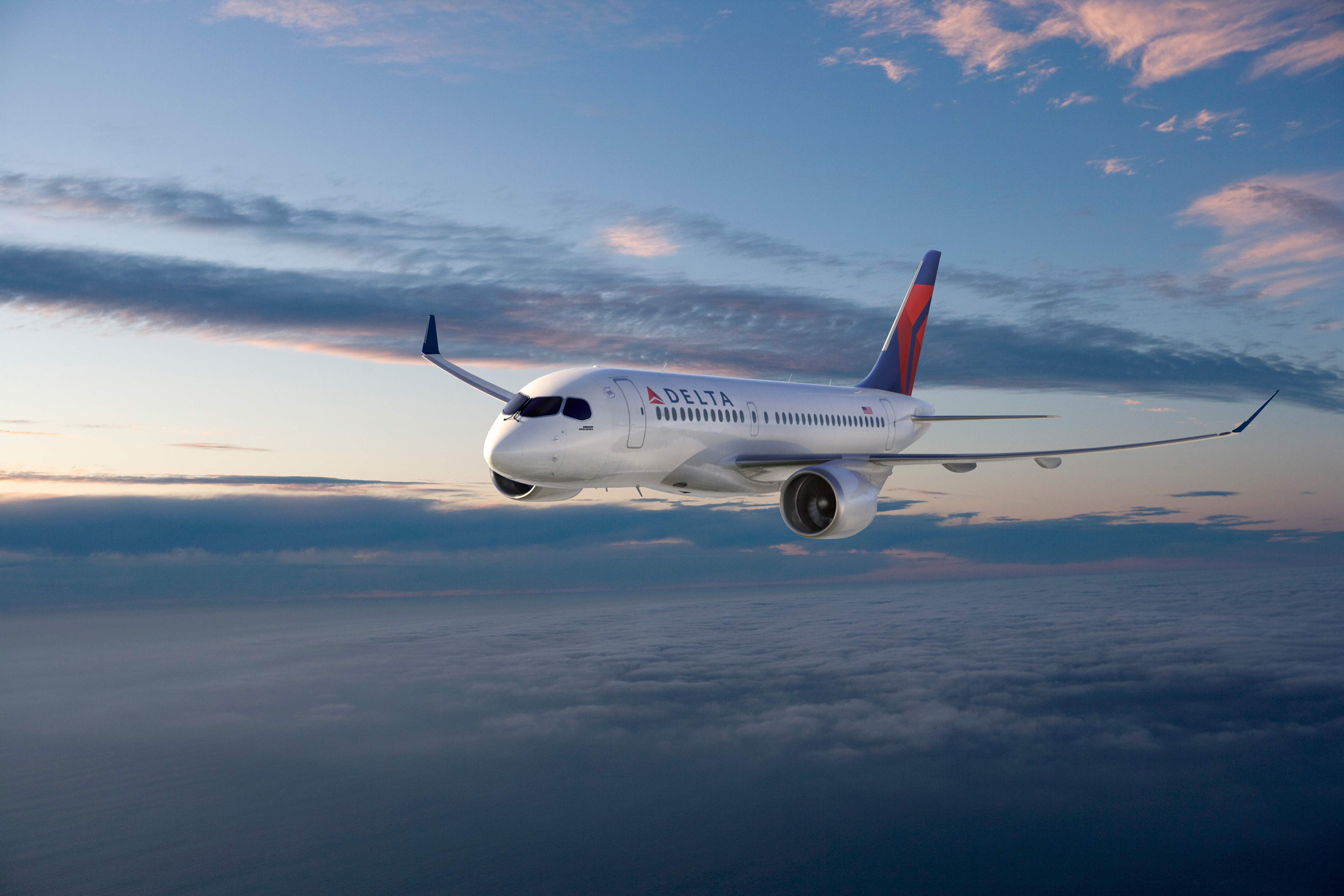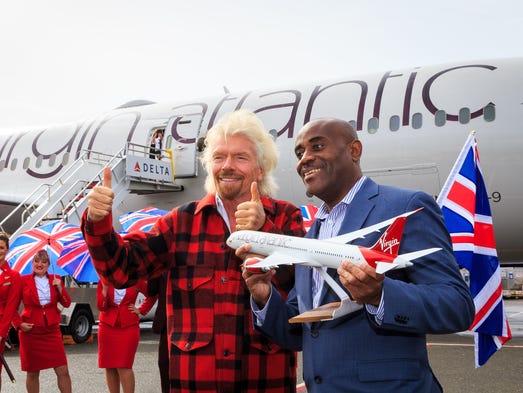Leeham News and Analysis
There's more to real news than a news release.
Leeham News and Analysis
- At long last, Boeing appears near certification and EIS for 777X
- Air India Flight 171 Preliminary Crash Report Is Unclear Regarding Pilot Actions
- Bjorn’s Corner: Air Transport’s route to 2050. Part 30.
- It’s official: MTU’s engine leader named CEO of Airbus Commercial from Jan. 1; future of Open Fan and A220-500 shifts to him
- Embraer E2: Where will the orders come from?
To Kill a Better Bird
Subscription Required
Introduction
Oct. 12, 2017, © Leeham Co.: Boeing’s brash and controversial move to file the trade complaint with the US Department of Commerce is a bold gamble designed to kill the Bombardier CSeries entirely, not just block it from the US market, people familiar with the strategy tell LNC.
The threat Boeing fears from the CSeries is not really about the 737-700 or 7 MAX, they say, but truly about the future of the 737-800 and 8 MAX.
While Boeing as clear in its filings with the US International Trade Commission (ITC) and Department of Commerce (DOC) about the alleged threats, some insight to Boeing’s thinking explained by people familiar with the situation was provided.
Summary
- Boeing hopes blocking the CSeries out of the US market will have a ricochet effect on Bombardier’s pricing strategy elsewhere.
- With a higher price, Boeing believes it can successfully compete head-to-head in acquisition campaigns.
- Boeing’s fear is really about the CS300 dragging down the price against the 7 MAX, which will have a cascading effect on the 8 MAX.
Posted on October 12, 2017 by Scott Hamilton
Decision detailed (sort of) in Boeing-Bombardier price dumping case
June 27, 2017, © Leeham Co.: The US International Trade Commission (ITC) last week released its detailed decision to go forward with the Boeing complaint that Bombardier engaged in price dumping when it sold the CS100 to Delta Air Lines.
But for the outsider, the public document isn’t much help. It’s heavily redacted and left out all the good stuff that would allow an outsider to fully understand the reasoning the ITC voted 5-0 to send the case over to the US Commerce Department for further study and potential imposition of tariffs.

Delta Air Lines Bombardier CS100.
Posted on June 27, 2017 by Scott Hamilton
Pontifications: Branson gets pissy over dropping the Virgin America name

By Scott Hamilton
April 3, 2017, © Leeham Co.: Sir Richard Branson came to Seattle last week to promote the new service by Virgin Atlantic Airlines to London. In a hissy-fit, he promptly pissed on Alaska Airlines for the business decision to drop the Virgin America brand in 2019.
Alaska, of course, acquired Virgin America last year. The acquisition didn’t sit well with Branson, who nevertheless made out well in the deal.
Although Alaska officials said they would decide later whether to retain the Virgin brand, only those with wishful thinking gave any chance of this happening.

Richard Branson in Seattle for Virgin Atlantic’s new service to London. USA Today photo via Google.
Branson certainly knows this. In 1997, Virgin Group acquired the low fare carrier Euro Belgium Airlines for $60m and promptly dropped the name in favor of Virgin Express.
VE lasted only nine years; it ceased operations in 2006 when it was sold and merged into the new Brussels Airlines.
Branson’s whining over Alaska’s decision to operate the merged operations into the Eskimo’s image smacks of hypocrisy.
Let’s also remember that his Virgin Atlantic is 49% owned by Delta Air Lines, which is building a hub in Seattle in competition with Alaska. The fight between Alaska and Delta is sometimes bitter.
Branson’s criticism of Alaska might have as much to do with Virgin Atlantic’s partnership with Delta as it does his own bruised ego.
Posted on April 3, 2017 by Scott Hamilton
Airlines, Alaska Airlines, American Airlines, Delta Air Lines, Pontifications, United Airlines, US Airways
Alaska Airlines, American Airlines, Britt Air, Continental Airlines, Delta Air Lines, Eastern Airlines, Horizon Air, Jet America, New York Air, PeoplExpress, Richard Branson, United Airlines, US Airways, Virgin America
Pontifications: Boeing MAX 10, “797” NMA dominated ISTAT headlines

By Scott Hamilton
March 13, 2017, © Leeham Co.: The soft launch of the Boeing 737-10 and the prospective Boeing “797” Middle of the Market aircraft easily were the headline news items to come out of the annual ISTAT conference in San Diego last week.
The “797,” as the MOM-sector aircraft was unofficially dubbed, brought enthusiastic reaction.
The MAX 10, not so much.
Posted on March 13, 2017 by Scott Hamilton
If Boeing builds MAX 10, will customers come?
Subscription Required
Introduction
March 7, 2017, © Leeham Co.: If Boeing builds the 737-10, which appears increasingly likely, will customers come?
This is always the multi-billion-dollar question for any aircraft and engine manufacturer.
For Boeing, launching the 737-10 is a low-risk, and in the eyes of many, futile effort to stem the bleeding of market share between the MAX 9 and its rival, the Airbus A321neo.
- “That’s the most absurd thing I’ve ever heard. What is he, flying downhill?” Airbus’ John Leahy reacting to claims by Boeing’s Randy Tinseth that the 737-10 has more range than the A321neo.
Depending on who’s counting and how the numbers are calculated, the A321 sales outpace the MAX 9 by a factor of four or five to one. LNC calculated last year that the ratio is more likely 3:1, identical to the market share split between the predecessor airplanes, the 737-900ER and the A321ceo.
Posted on March 7, 2017 by Scott Hamilton
Pontifications: Boeing 737-9 roll-out–Nothing Special in the Air
March 6, 2017, © Leeham Co.: Boeing rolls out its 737-9 MAX tomorrow.
Last week, I received a call from one of the network/cable news organizations asking, What’s special about this airplane?
The answer is: Nothing.
Posted on March 6, 2017 by Scott Hamilton
Airbus, Alaska Airlines, American Airlines, Boeing, China, Delta Air Lines, Lessors, Pontifications, United Airlines
737-10, 737-7, 737-8, 737-800, 737-9, 737-900, 737-900ER, 737NG, 747-8, 787, Airbus, Alaska Airlines, American Airlines, Boeing, Delta Air Lines, New Small Airplane, NSA, United Airlines, Virgin America
Pontifications: Alaska’s A321neo test drive
Feb. 13, 2017, © Leeham Co.: It was subtle, but it was there: Alaska Airlines will take the Airbus A321neo for a test drive.
This will happen via its new sibling, Virgin America, which has 10 A321neos on order. VA is an exclusive A320 operator. Alaska flies only Boeing 737s. The acquisition of VA by Alaska immediately raised questions whether Alaska will retain the Airbus fleet and orders or phase them out in favor of the 737.
737s. The acquisition of VA by Alaska immediately raised questions whether Alaska will retain the Airbus fleet and orders or phase them out in favor of the 737.
Of more interest to partisans than to me, the question over the future of the Virgin America brand also became a top question.
Posted on February 13, 2017 by Scott Hamilton
Embraer 3Q2016 results: Stabilized situation
By Bjorn Fehrm
1 November 2016, ©. Leeham Co: Embraer reported slightly better than expected results for 3Q2016, with revenue up by 18% to $1,514m. Gross margin for the company is at a stable 19% (18% 3Q2015) and EBIT before one-off was $95m ($85m).
After one time charges, the result was a loss of $34m, attributable to a layoff program of $118m and additional charges in the Corruption affair the company has been involved in. The company reiterated its guidance for 2016, adjusted downwards in last quarters presentation.
The Commercial Aviation side delivered more aircraft than expected and Defense & Security increased revenue by 19%. The business jet side did not expand as planned. Despite the certification of new models (Legacy 450), the delivery of new business jets is stuck at about 50% below what was expected, around 25 units per quarter instead of more than double that at the end of 2015.

Embraer’s commercial aircraft best seller, the E175 being in Alaska livery. Source: Alaska Airlines.
While deliveries of commercial aircraft held up at 29 units, sales are not keeping pace with 17 aircraft sold in the quarter. Deliveries year-to-date are at 76 E-Jets while orders are at a low 51 for a book-to-bill of just 0.67.
Defense & Security stabilized with the KC-390 military transport program now progressing. The flight test program now has two aircraft.
Here the details of the financial results for the divisions and their aircraft programs: Read more
Posted on November 1, 2016 by Bjorn Fehrm
ATR targets Bombardier’s last stronghold: the USA
May 17, 2016, © Leeham Co.: ATR, the dominant manufacturer of turboprop airliners, last week undertook its first major marketing push in the USA in 10 years.
The US has been the exclusive domain for passenger turboprop service above 50 seats. (FedEx operates ATR cargo aircraft.)
But the time has come for ATR to return to the US for a number of reasons.
- The Bombardier Q400 is aging in US service, and replacements will be needed soon.
- The ATR 72-600 has been modernized with a new glass cockpit, larger overhead bins and other features.
- The aircraft now has an optional forward boarding door, a desirable feature in the US, allowing jetbridge boarding.
Horizon Air, a subsidiary of Alaska Air Group, operates 52 Q400s, including 14 Next Gen models, according to the Ascend data base. These are all of them in the US. Horizon is returning 15 of the Q400s come off lease, replacing them with Embraer E175s.
Read more
Posted on May 17, 2016 by Scott Hamilton
Alaska, Virgin confirm merger
 April 4, 2016, (c) Leeham Co.: Alaska Air Group and Virgin America confirmed weekend reports that they reached a deal to merge.
April 4, 2016, (c) Leeham Co.: Alaska Air Group and Virgin America confirmed weekend reports that they reached a deal to merge.
The replay of the Alaska webcast/conference call, with slide show, is here.
Rationale includes what LNC outlined in our March 29 post: growth, access to more gates and slots. Alaska officials said Virgin’s presences in California, combined with Alaska, will give Alaska to #1 market share position on the US West Coast, passing Southwest Airlines’ 21% by one percent.
Here are some highlights from the conference call:
Posted on April 4, 2016 by Scott Hamilton



